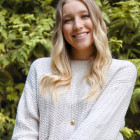Lightening in Pregnancy: When Does Baby Drop?
If you’re nearing the end of your pregnancy, and hear the words “baby dropping” or “lightening,” you may wonder exactly what this means. (Don’t worry, no one’s dropping babies around here!) These terms simply refer to the fact that you’re suddenly carrying lower.
This is a huge milestone as you approach labor—and you may be feeling excited, nervous or a little of both. This is completely normal and totally understandable. Learning the signs of lightening in pregnancy can help you feel more prepared physically and emotionally for this major shift. So when does baby drop—and what does this feel like? Read on to get the facts, straight from experts.
For most of your pregnancy, baby is high up in the uterus. But toward the end of the third trimester, baby begins to travel downward to move into an optimal position for birth. This process is referred to as lightening or baby dropping.
As your body gets ready for labor, the cervix decreases in length, and baby will “drop” lower. “It happens as a result of softening to the lower segment of the uterus,” explains Skyler Jacobs, CNM, a certified nurse midwife with Modern Obstetrics and Gynecology of North Atlanta in Georgia.
So why is it called lightening? Simply put, when baby moves down, Mom begins to feel lighter—at least the upper part of her abdomen will. Less pressure is applied to the ribs and diaphragm making it easier to breathe. And, yes, this is a sign that baby is coming relatively soon.
There’s no universal week of pregnancy that baby dropping occurs, but it generally takes place later in the third trimester, as you’re approaching delivery. “Lightening can happen a few weeks or even just a few hours before going into labor,” says Sanaz Ghazal, MD, FACOG, a board-certified ob-gyn and reproductive endocrinology and infertility specialist. “It’s different for every person.”
It’s not always obvious, but there are a few noticeable clues you can look for to decide if lightening has occurred. Jacobs says these are a few common signs of baby dropping to be aware of:
- Widened hips
- Increase in discharge; potential loss of mucus plug
- Lower belly button placement
- Waddled walking
- Sudden relief from heartburn
- Having to urinate more frequently
- Feeling more intense pelvic pressure
- Experiencing lower back or sciatica pain, which is a nerve pain that typically occurs in the hips and can travel down through the legs
- The ability to breathe easier
- A change in fundal height at your next doctor’s appointment (your belly might measure a bit smaller)
You might experience all of these signs, some of them or none at all. No two pregnancies are alike.
What does it look like when baby drops?
It’s pretty self explanatory: If baby has dropped, your bump might look a little lower than normal. “This can be especially noticeable when standing at a side angle,” says Jacobs. That said, you may remain oblivious to this change, while a friend or loved one immediately notices your pregnant belly drop.
What does it feel like when baby drops?
The physical sensations of lightening in pregnancy tend to be more noticeable than the visual cues. One thing you may find is the ability to breathe more easily and comfortably. “As baby drops lower in the pelvis, there’s less pressure on the diaphragm and lungs, which can make it feel easier to breathe,” says Ghazal. You may even find yourself being able to eat more than earlier in the third trimester. Moreover, while you’ll feel lighter on the top, you might start noticing a heaviness in your pelvic region, as baby is now engaged and prepping for labor. Additionally, if you find yourself racing to the bathroom every five minutes to pee, it might be another sign that baby has moved lower.
Toward the end of pregnancy, there are many new and noticeable changes in your body. If you haven’t seen or felt any dropping symptoms yet, don’t worry! Keep checking in with your body (and your provider), and soon enough baby will be nestled right into your pelvis ready to get the show on the road.
Unfortunately, if you’re hoping for a definitive sign that baby’s arrival is imminent, lightening isn’t it. It’s a common misconception that baby dropping is linked to the direct onset of labor. “Lightening doesn’t necessarily mean that someone is going into labor immediately,” notes Ghazal. If baby has dropped, you’re in the home stretch—but that could mean hours, days or weeks. Unfortunately, there’s no real way of knowing.
Interestingly, if you’re expecting baby number two or beyond, the timing of lightening might be different than in your first pregnancy. “For women who’ve given birth before, lightening may not occur until later on in the pregnancy—just days before the onset of labor or in the process of true labor,” notes Jacobs. Medical experts believe that this is because the pelvic floor muscles have already been stretched from a previous pregnancy and birth—so they don’t need time to “warm up” for labor.
If you’re experiencing a healthy pregnancy and at least 36 weeks along, Jacobs says it’s generally safe to start encouraging the lightening process. But if you don’t plan on having a vaginal delivery or are considered high-risk, trying to get baby to drop early could cause complications.
Before taking matters into your own hands, ask your provider if you and baby are ready to engage in lightening exercises. If you get the green light, there are a few ways you can try to move things along. The main goal is to engage the head of baby into your pelvis. Below, Jacobs shares tips and movements to encourage baby dropping:
- Widened deep squats. This stretch helps open the top part of the pelvis. These can be done throughout the day and held up to 10 seconds at a time. Just be sure to stretch well before squatting.
- Yoga ball rocking. Using a yoga ball, gently rock your hips from front to back and in circles to help open the top part of the pelvis. Ensure your knees are lower than the level of your hips with legs slightly angled out to each side.
- Abdominal lifts and pelvic tucks. This exercise can provide both comfort for the over-stretched abdominal muscles and help engage baby’s head into the pelvis. Start by embracing baby with both arms along the bottom part of your belly. Next, lift the belly while simultaneously “tucking” your pelvis up towards the sky. This exercise is easiest done up against a wall.
- The figure-4 stretch. This hip opening exercise ensures the muscles of the pelvic floor are flexible and fluid to allow baby to engage in the pelvis. Sit down in a chair and cross your right leg over your left thigh, placing the outside of your right shin just above your left knee. Lean forward over your thighs for a good stretch. Repeat with the other leg.
Whether lightening is noticeable or not, the best thing you can do, as you near the end of your pregnancy, is take good care of your body and prioritize your health. Baby will come soon enough; try to relax, know what to expect and prepare yourself as best as you can.
About the experts:
Skyler Jacobs, CNM, is a certified nurse midwife practicing full-scope midwifery in the hospital and clinic setting. She is also the founder of Well & Worthy Co. where she passionately empowers expecting women through their pregnancy, birth and postpartum journey. Jacobs earned her master’s degree at Vanderbilt’s School of Nursing in Nashville, Tennessee.
Sanaz Ghazal, MD, FACOG, is a board-certified ob-gyn and reproductive endocrinology and infertility specialist. She earned her medical degree from Yale, and has authored numerous publications, journal articles and book chapters in top medical textbooks. She currently practices at RISE Fertility in Newport Beach, California.
Please note: The Bump and the materials and information it contains are not intended to, and do not constitute, medical or other health advice or diagnosis and should not be used as such. You should always consult with a qualified physician or health professional about your specific circumstances.
Plus, more from The Bump:
Navigate forward to interact with the calendar and select a date. Press the question mark key to get the keyboard shortcuts for changing dates.





















































